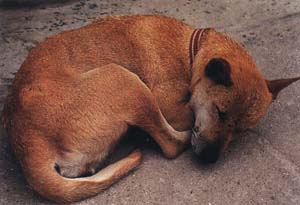Coat Quality
Jindos should have at minimum a double-layer coat. They should have an outer layer of guard hairs and an inner layer of undercoat.
There is sometimes references to a "3-hair dog." I believe this might refer to 1) regular undercoat, 2) regular guard hairs, and 3)
scattering of extra-long guard hairs. Not a lot of Jindos, especially white Jindos, have the extra-long guard hairs these days.
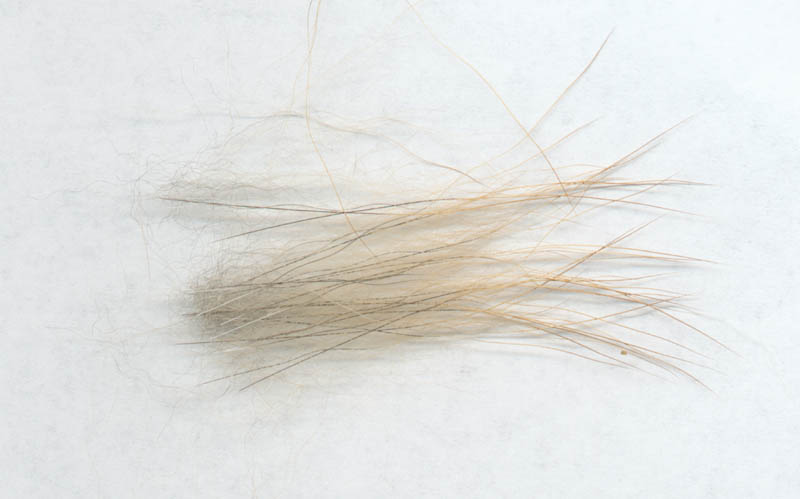
Guard hairs are sharply defined and colored.
Undercoat is fuzzy and greyish on this picture.
Extra long guard hairs (black) are difficult to capture on camera.
|
The guard hairs are shiny, stiff, and water-proof while the undercoat hairs are soft, slighty crinkly, and
insulating. Sometimes the ends of the guard hairs become sunburned and are described as fish-hooked. The guard hairs are lifted somewhat away from the body and give the overall harsh feel to the coat. Dogs with hairs that lay flat against the body are not desired.
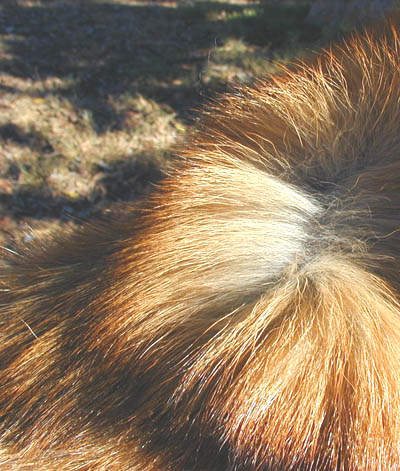
Fur is angled away from the body - photo by Ann Kim |
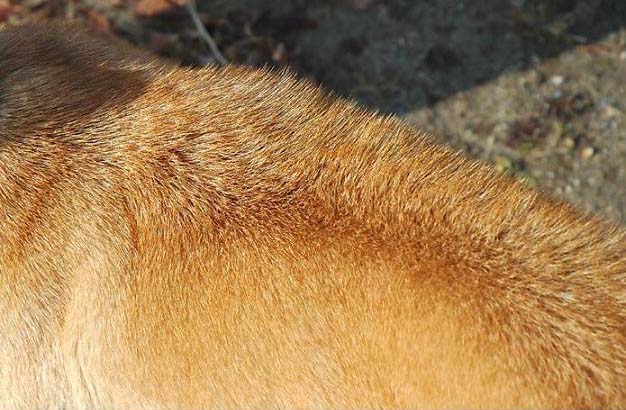
Stiff guard hairs on a shorter coat. |
The coat should be of medium length with longer hairs on the shoulders and tail. There are a few sources that comment that average size dogs should have hairs 1-2 inches in length, especially on their shoulders.
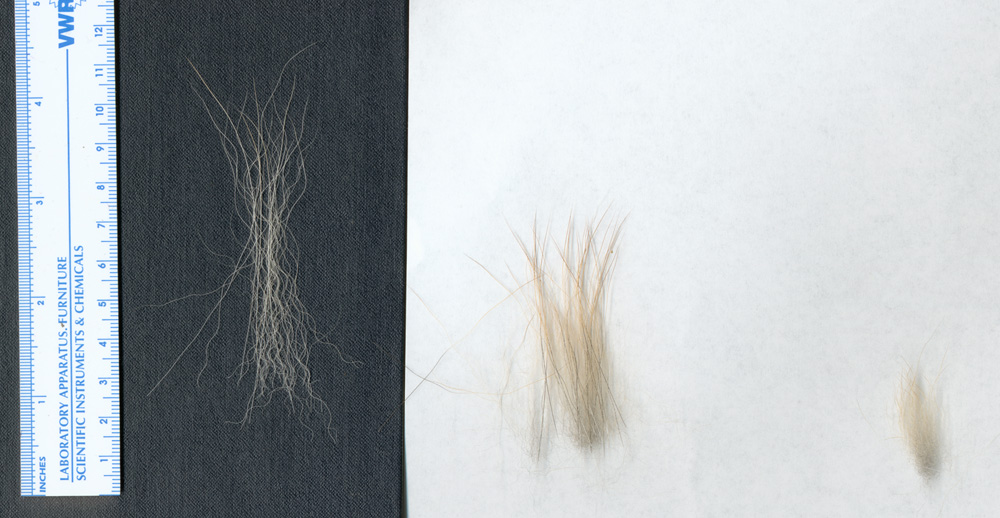
Tail fur, Shoulder fur, and Body fur - photo by Ann Kim |
The tail fur is not simply longer, but it must be stiff and stand out. On curled or rolled tails, the abundance of long stiff guard hairs gives the tail the "fan" form.
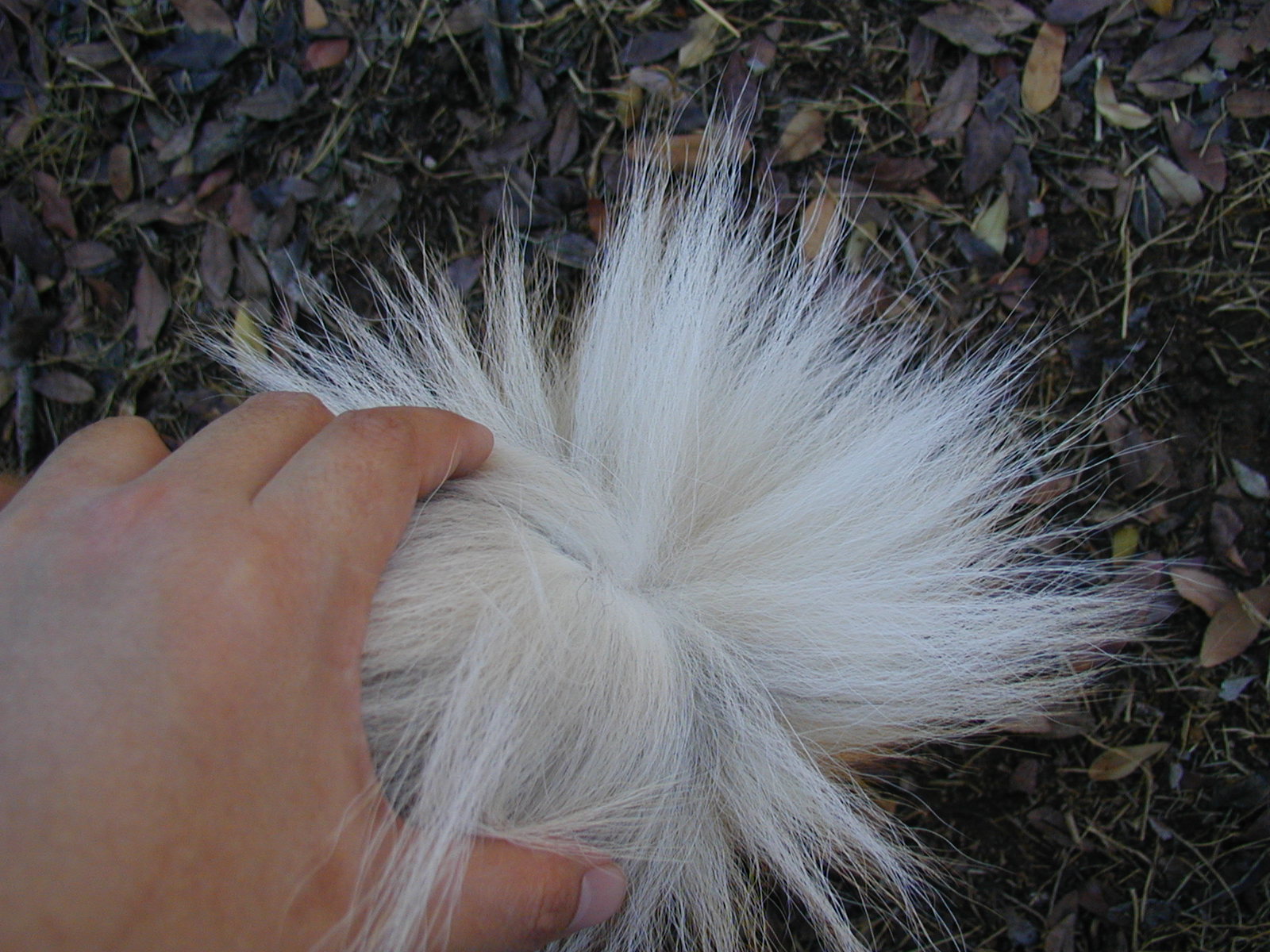
Tail fur - photo by Ann Kim |
There are dogs with shorter length double-coat in the breed, but they are not as desired since it does not protect the dog as effectively from cold and brushwood during a hunt.
Similarly, dogs lacking an undercoat or having a soft outer coat are not desired for the same reason.
|
shorter length fur
from Jindok Gae by Yoon (pg. 135) |
There is a small percentage of Jindos with long or wooly hair.
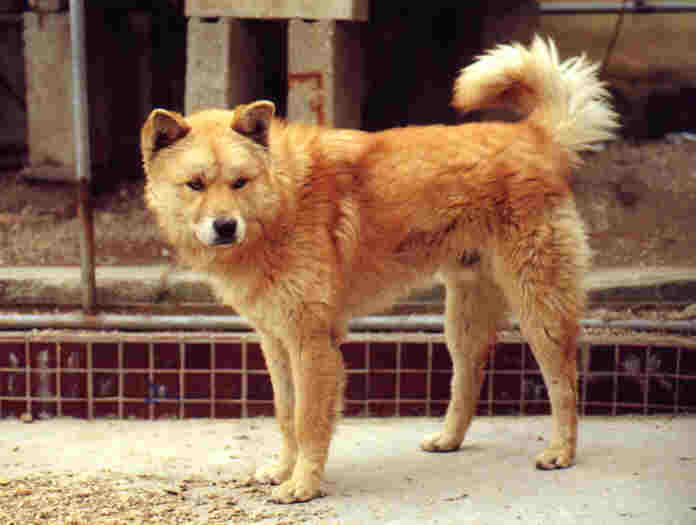 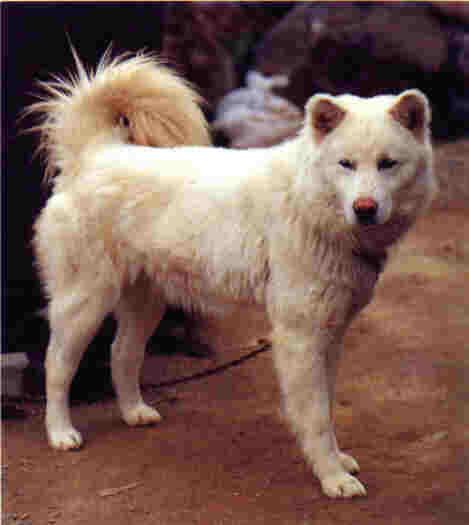
slightly long fur
from Hankookea Toejonggae by Ha & Yim (pg.92) |
Generally in other breeds, dogs with wooly coats (soft undercoat is much
longer than guard hairs) are not considered as functional since it would allow ice to cling to the fur or the dog could become soaked to the skin by water.
Sheddings
The shedding of the coat occurs twice a year, with the heavier shed in the spring and the lighter one in the fall, but there are exceptions. Unspayed females tend to shed their guard hairs more often than males. Dogs that spend most of their time indoors tend to "roll their coat" and shed only gradually but throughout the year.
The shed can be triggered by hormones, a change in diet, stress, and even
the change in the amount of daylight.
A sign of a good, thick undercoat is the fur coming off in clumps during the shed. To a certain extent, weather has an effect on the
thickness of the undercoat, but it should not affect the quantity or length of the guard hairs.

Last clump of good undercoat - photo by Ann Kim |






